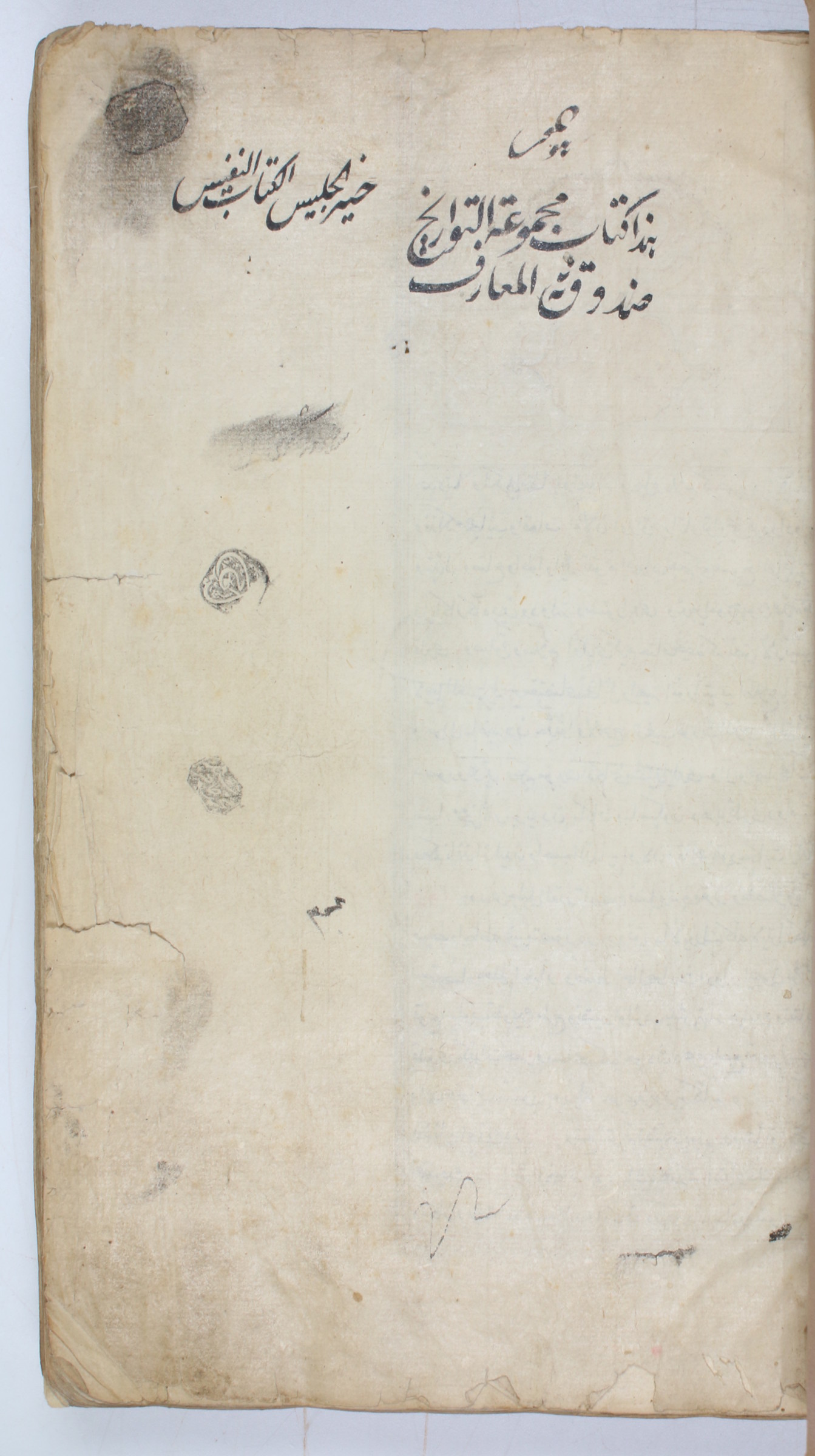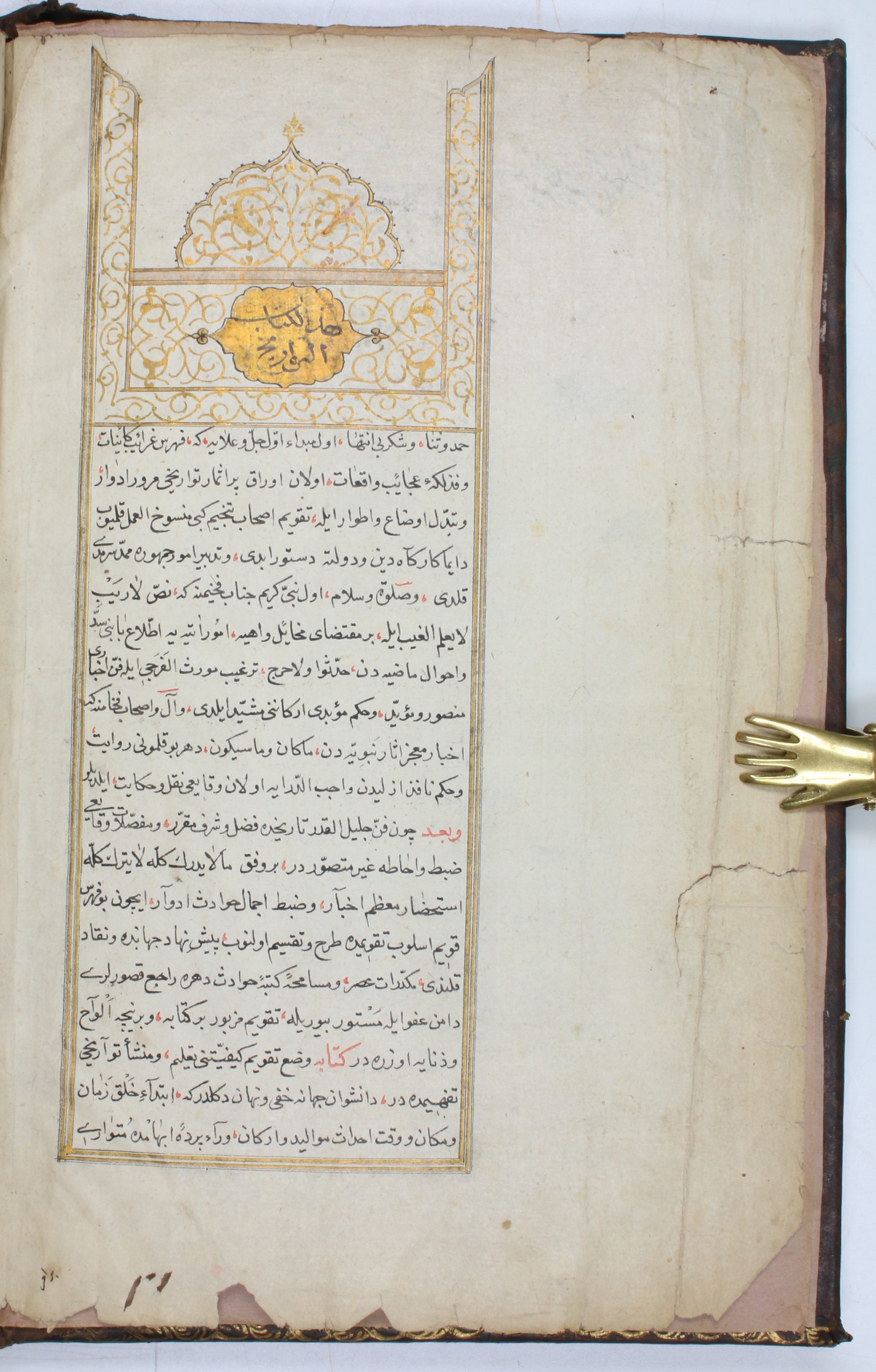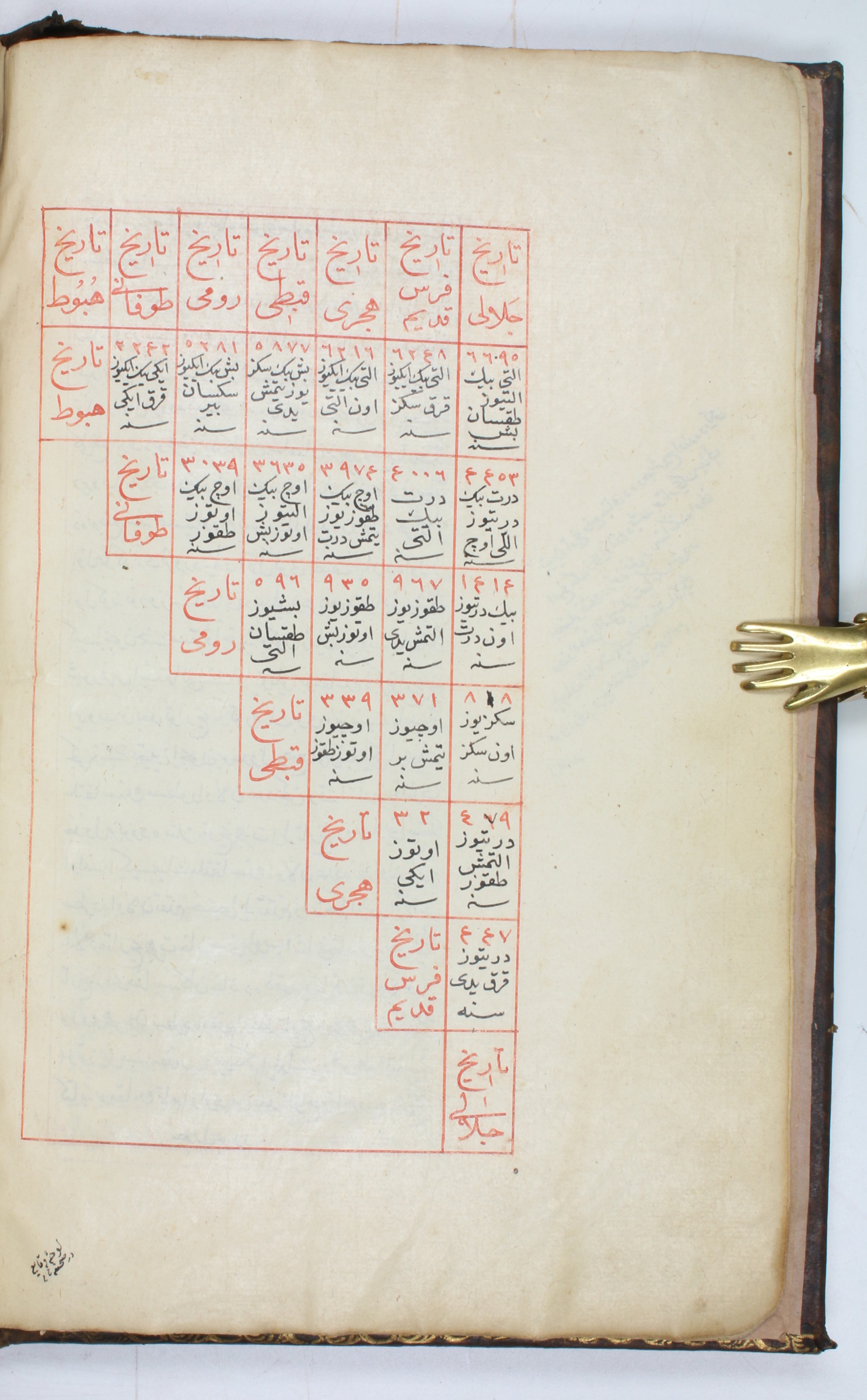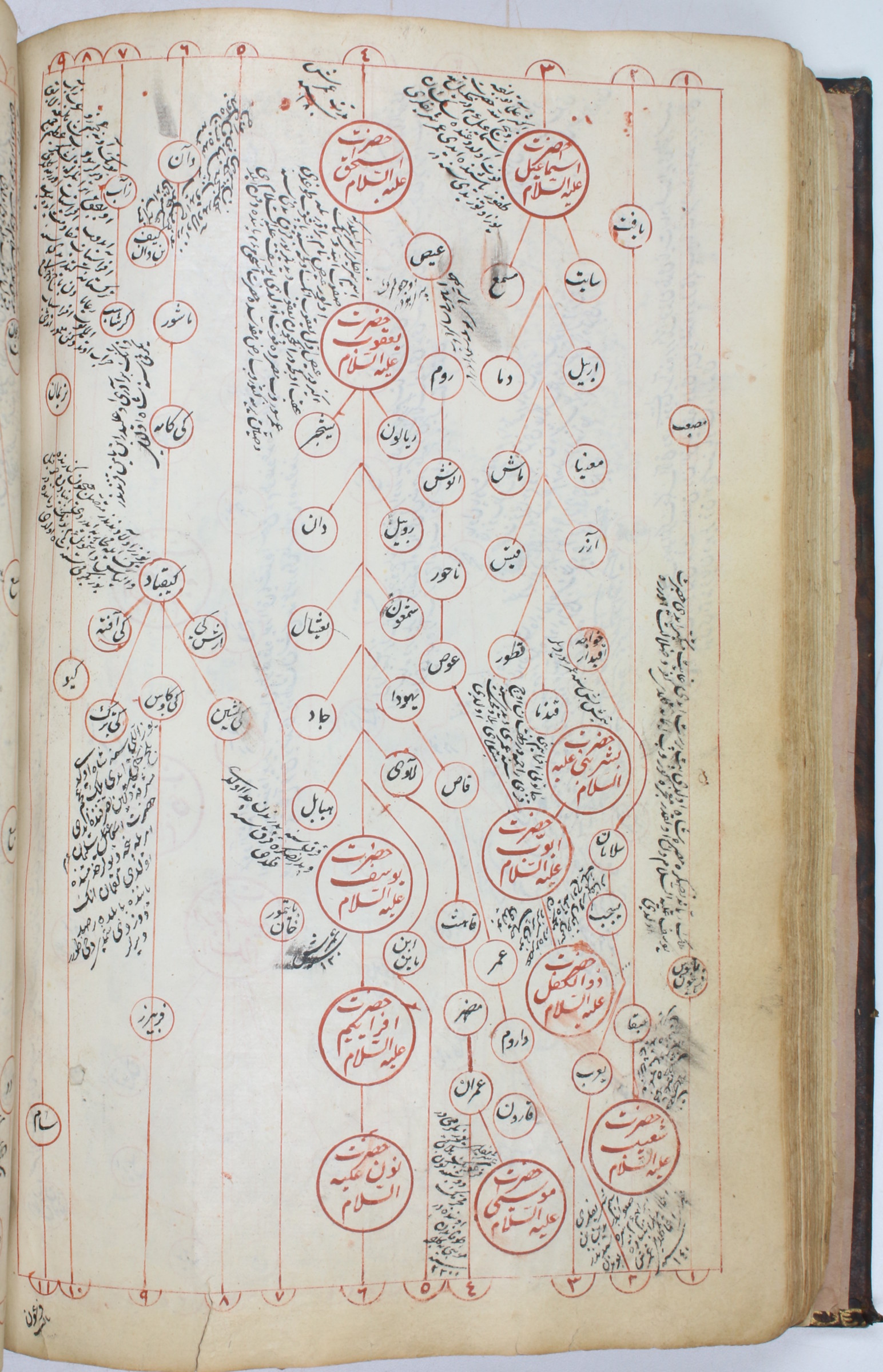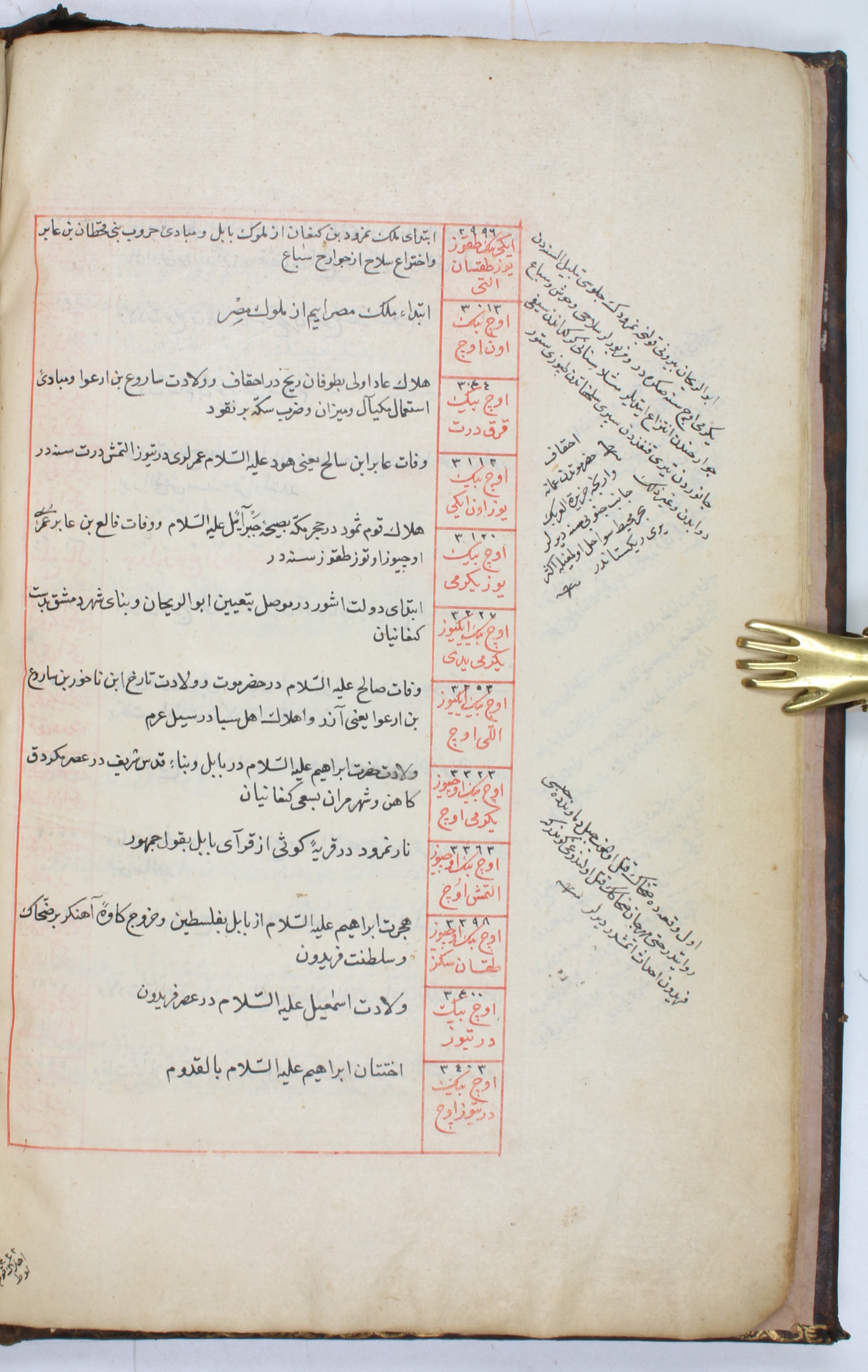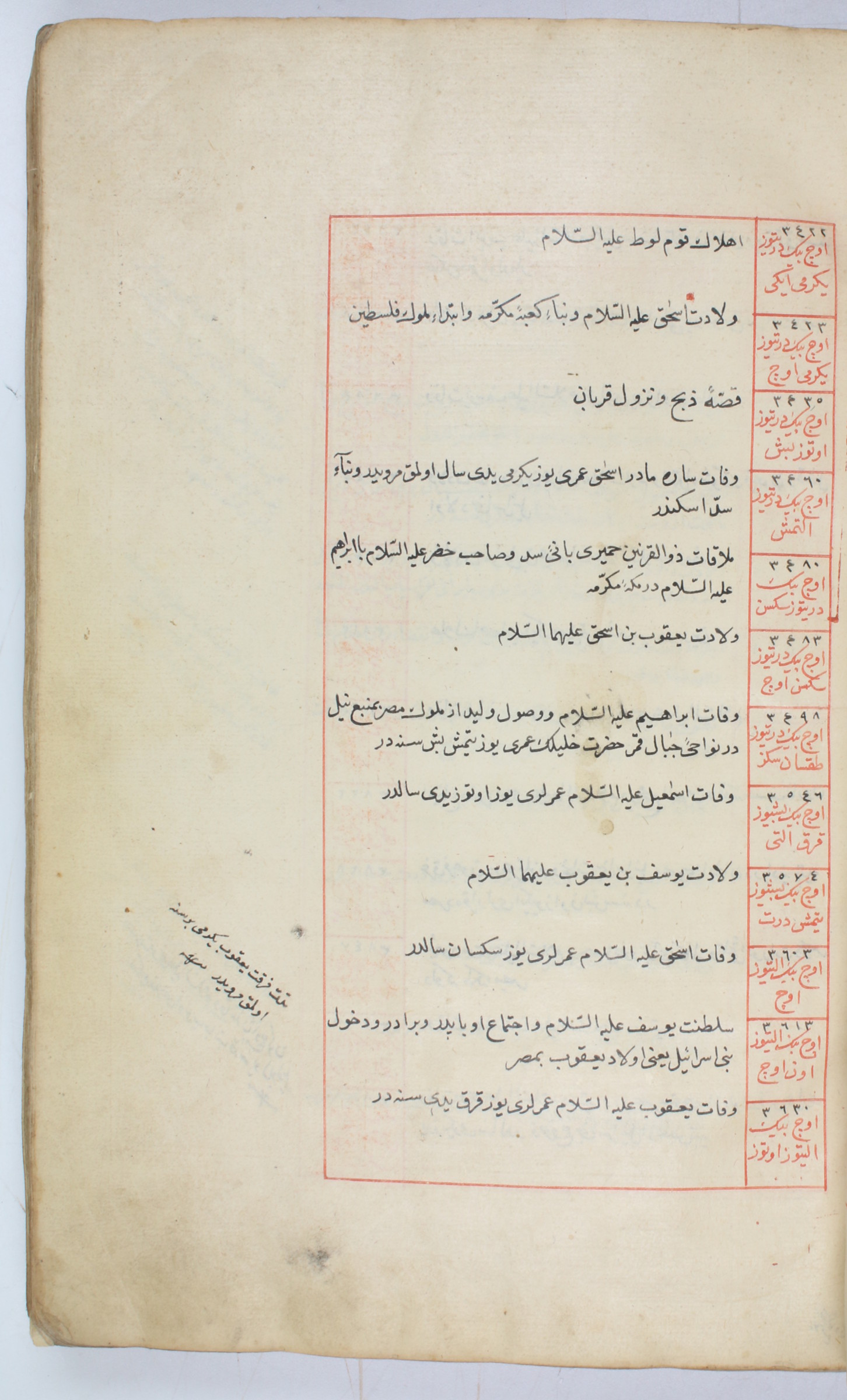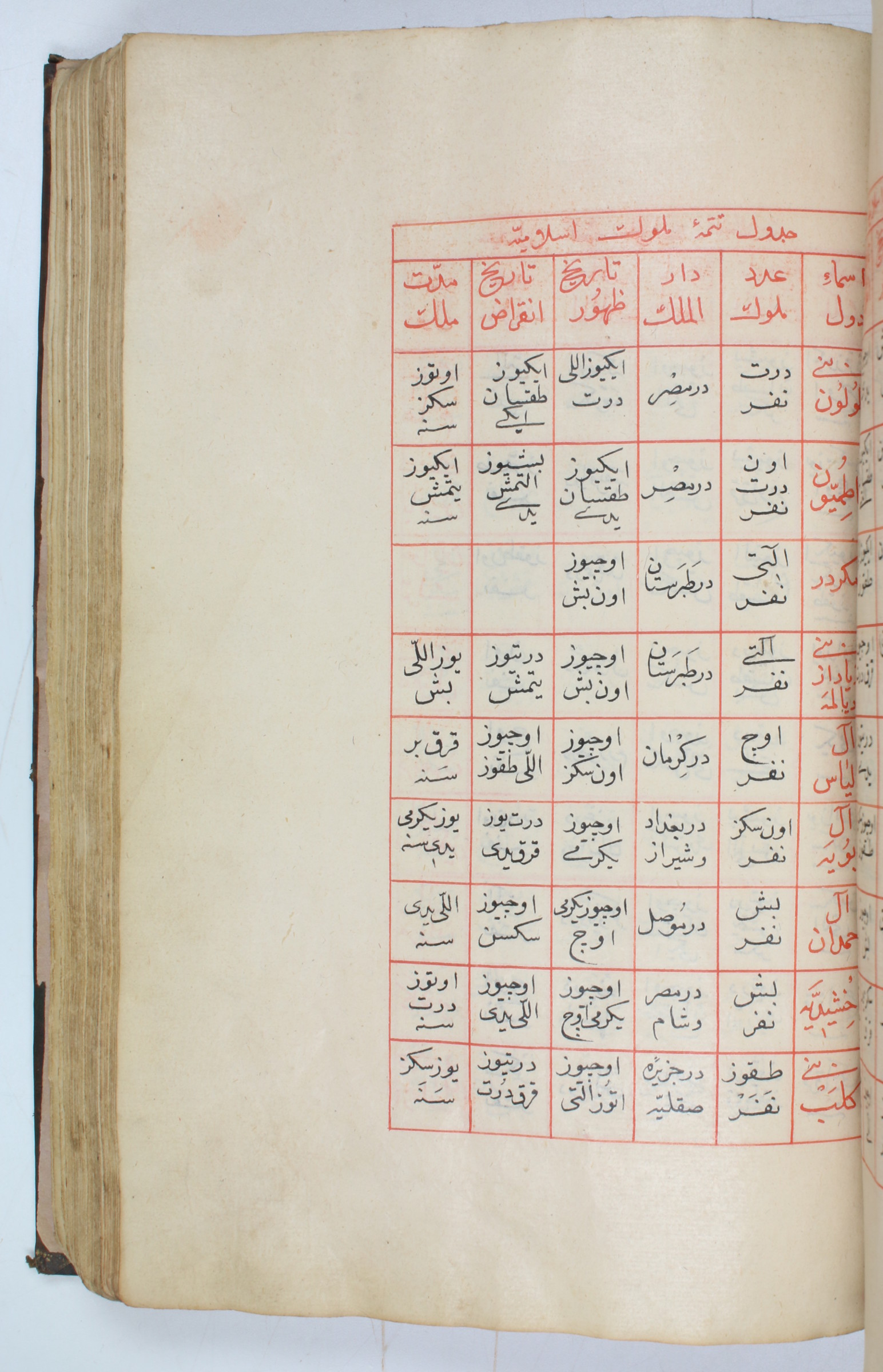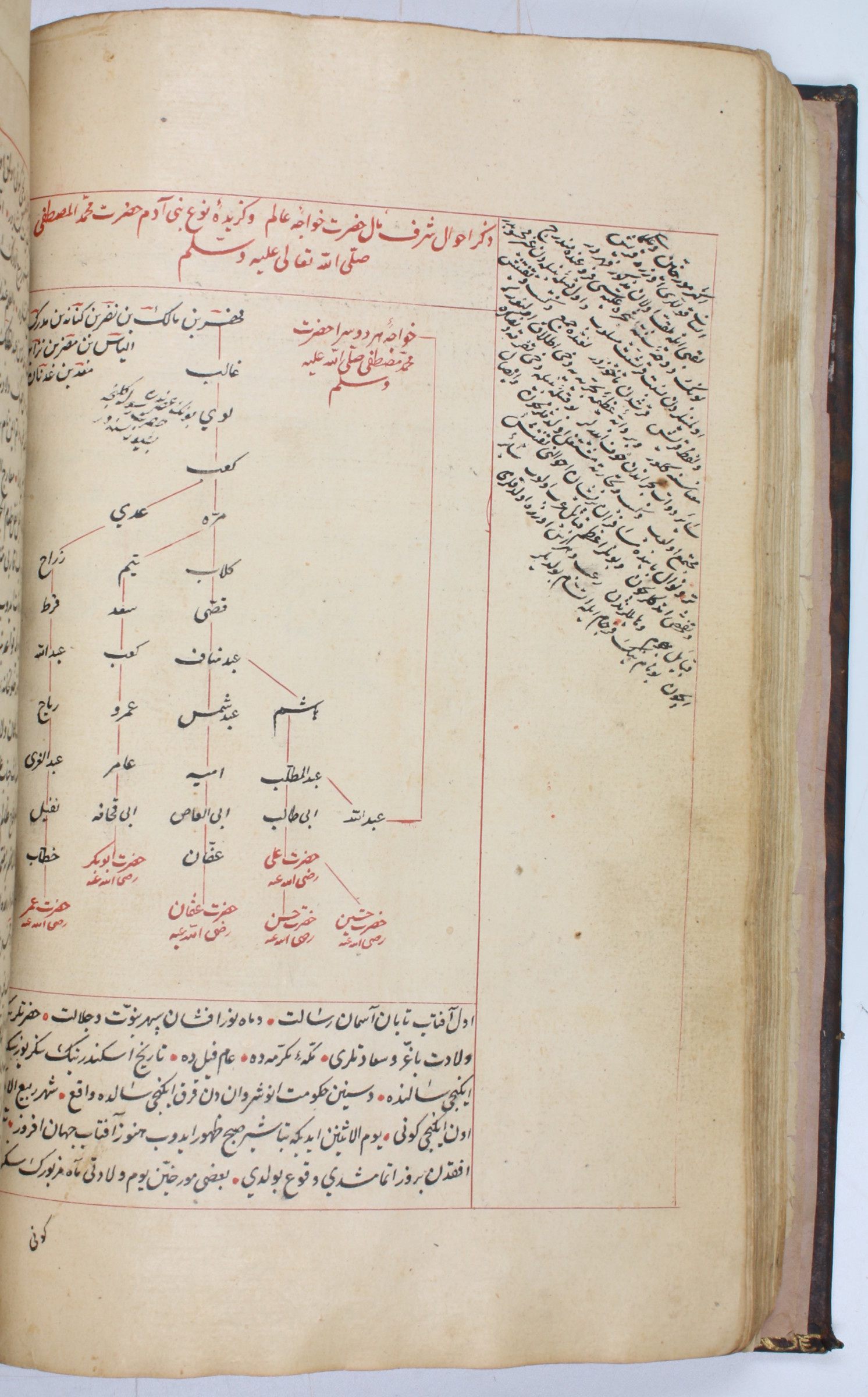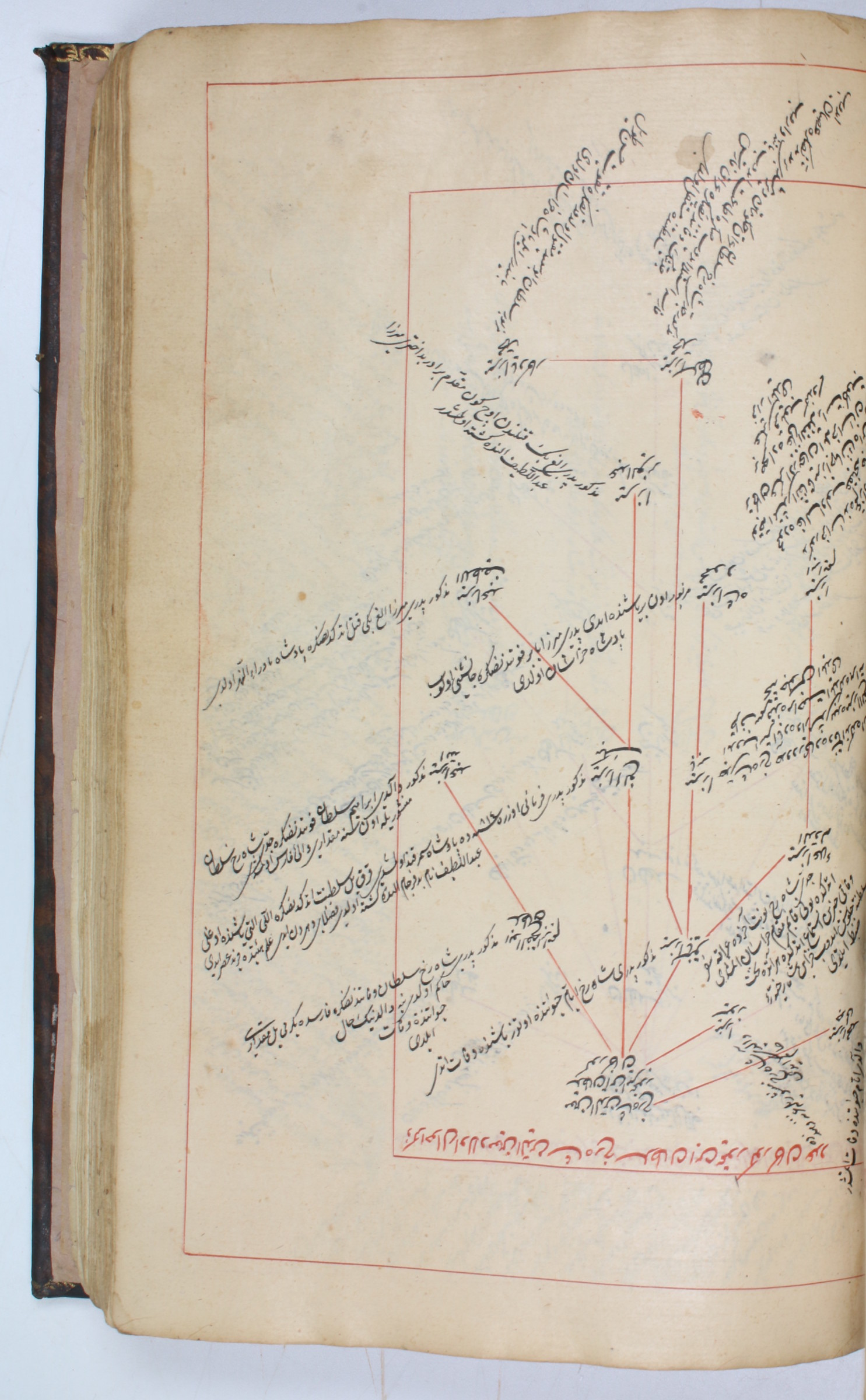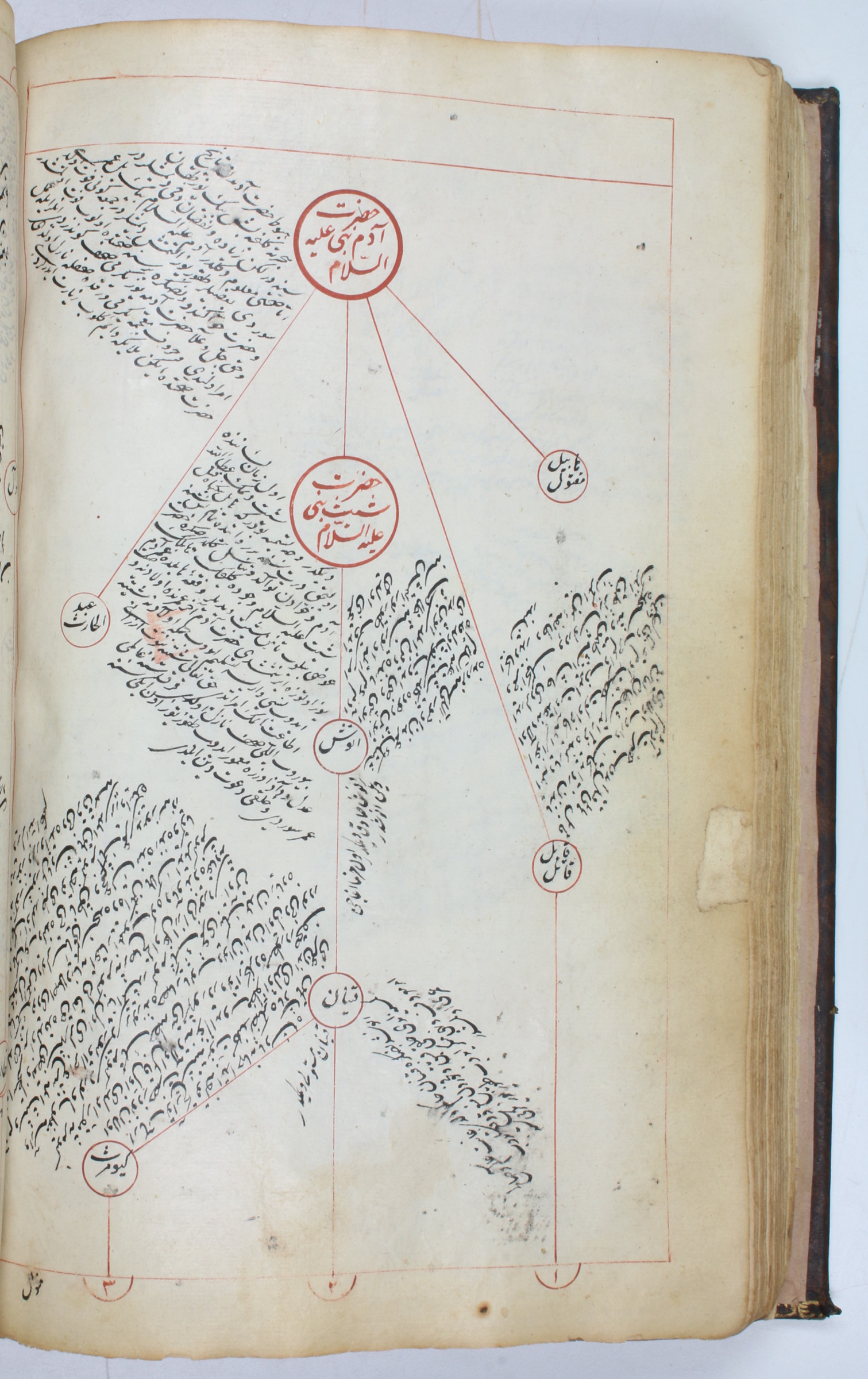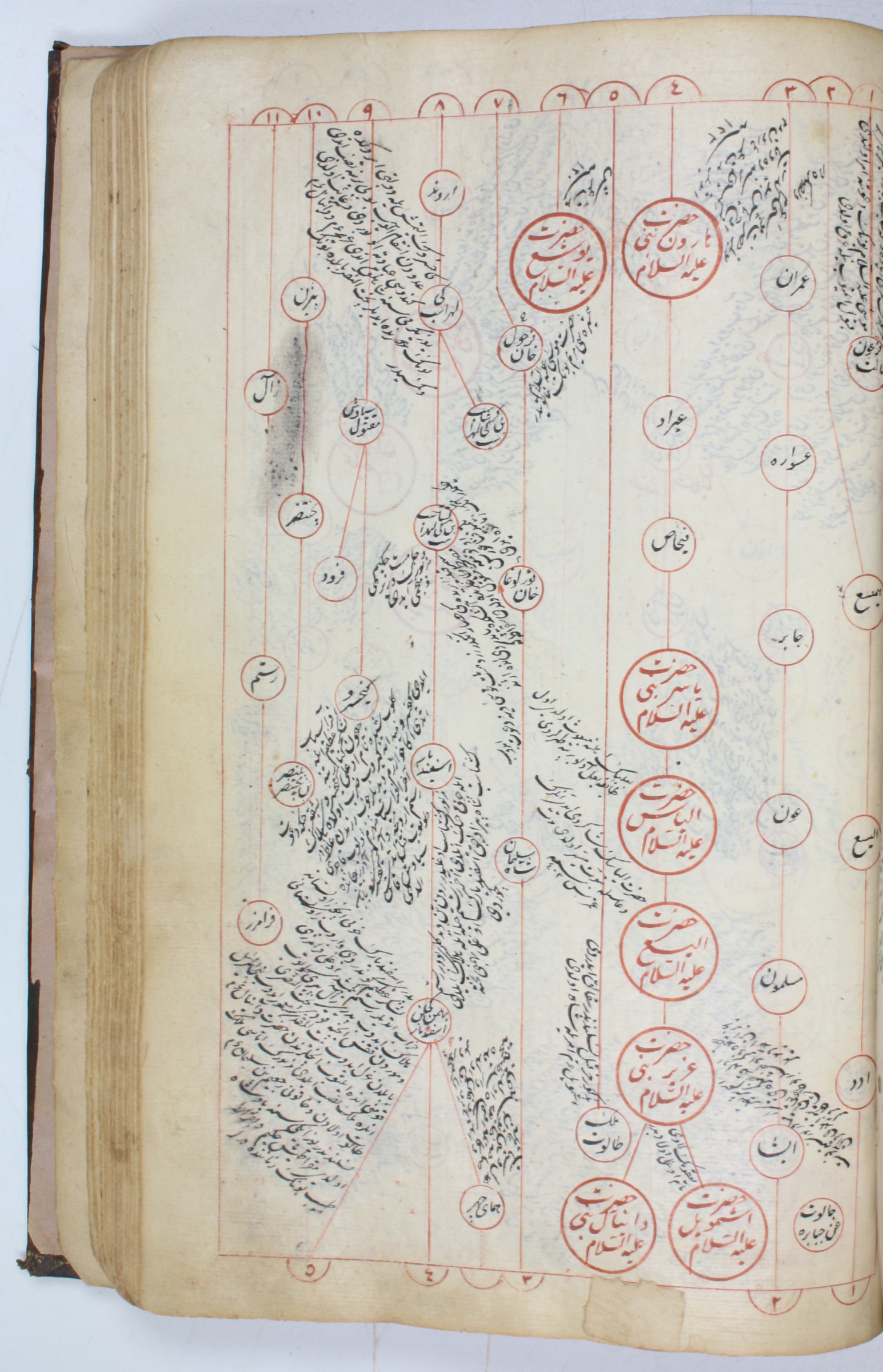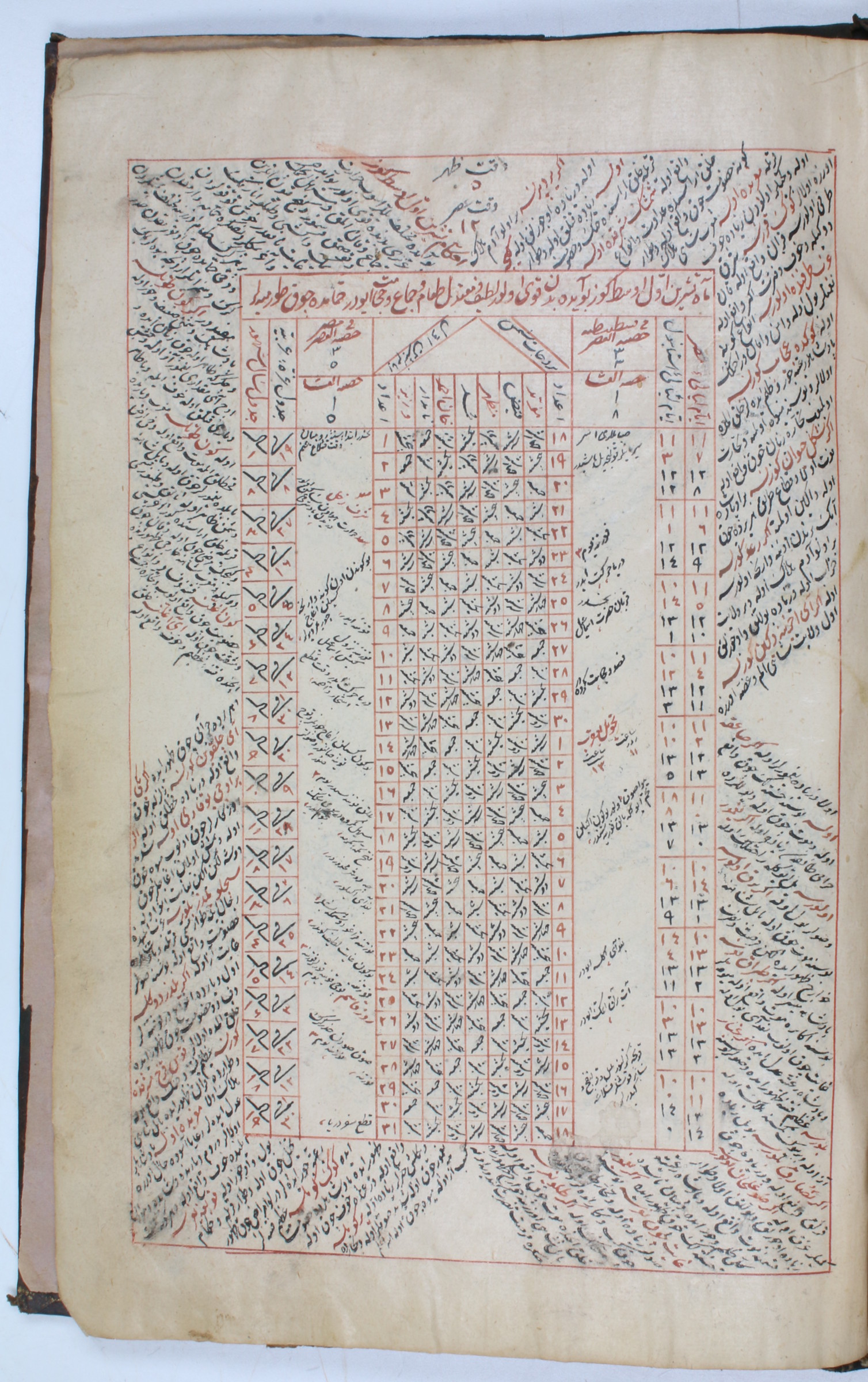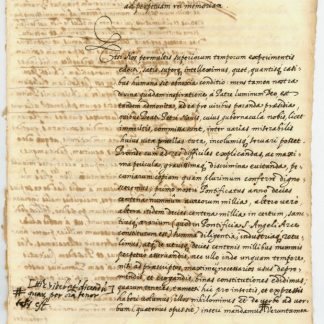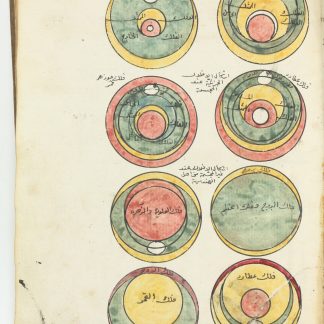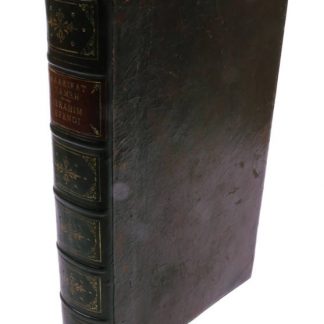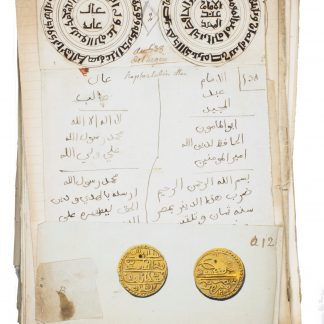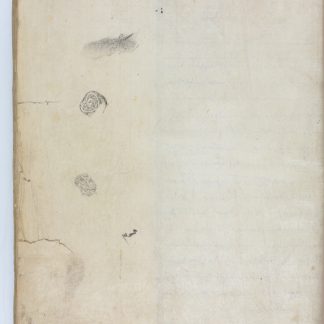Historical compilations and tables of astronomical concordances
Kitab majmu'a al-tawarikh sunduq al-ma'arif.
Small folio (193 x 287 mm). Ottoman Turkish collective manuscript on polished laid paper. 220 leaves, comprising four parts. 25 lines of black and occasional red Naskhi by several hands, within red rules, but first two pages within double gilt rules and with a pretty gilt scrollwork 'unwan at the begining. Early full Western calfskin binding, spine and covers stamped in gilt.
€ 22,000.00
A compilation of four texts, in different hands, from the end of the 17th or 18th century, containing chronologies as well as astronomical concordances. The contents are, individually:
1. The "Taqwim al-tawarikh", an annalistic chronicle from the creation of Man to the year 1648, when it was composed by the famous Turkish polymath Katib Chelebi (1609-57). This work was first printed in the original mixture of Persian and Ottoman Turkish by Müteferrika in 1733. "[T]he work originated as an excerpt of [Chelebi's previous effort,] 'Fazlakat aqwal al-ahyar', but continued up to Chelebi's own time [...] Becoming highly popular as an easy reference work, it was continued after Chelebi's death by several authors, including Hüseyin Hezarfenn" (Kafadar, Karateke, Fleischer: Historians of the Ottoman Emprire).
2. "Nukhbat al-tawarikh wa al-akhbar" (Chronological Tables of Muslim Dynasties) by Mehmed bin Menera Edirnevi (Muhammad Efendi, d. ca. 1640). The family tree that is here developed begins with Adam and ends with Sultan 'Uthman II (ruled 1618-22).
3. The chronological tables of Hezarfenn Husayn Efendi (d. 1691/92), enumerating the rulers of Persia, Ottoman Sultans, and Emperors of Byzantium up to the conquest of Crete in 1669. Dated 1201 AH (1786 CE) at the end.
4. A compilation of astronomical concordances.
A few edge and corner flaws, but generally well preserved. A 20th century note in French, loosely inserted at the beginning of the manuscript, identifies the four texts individually.
Provenance: 20th century Parisian private collection, kept in the family for several generations and dispersed in 2022.

